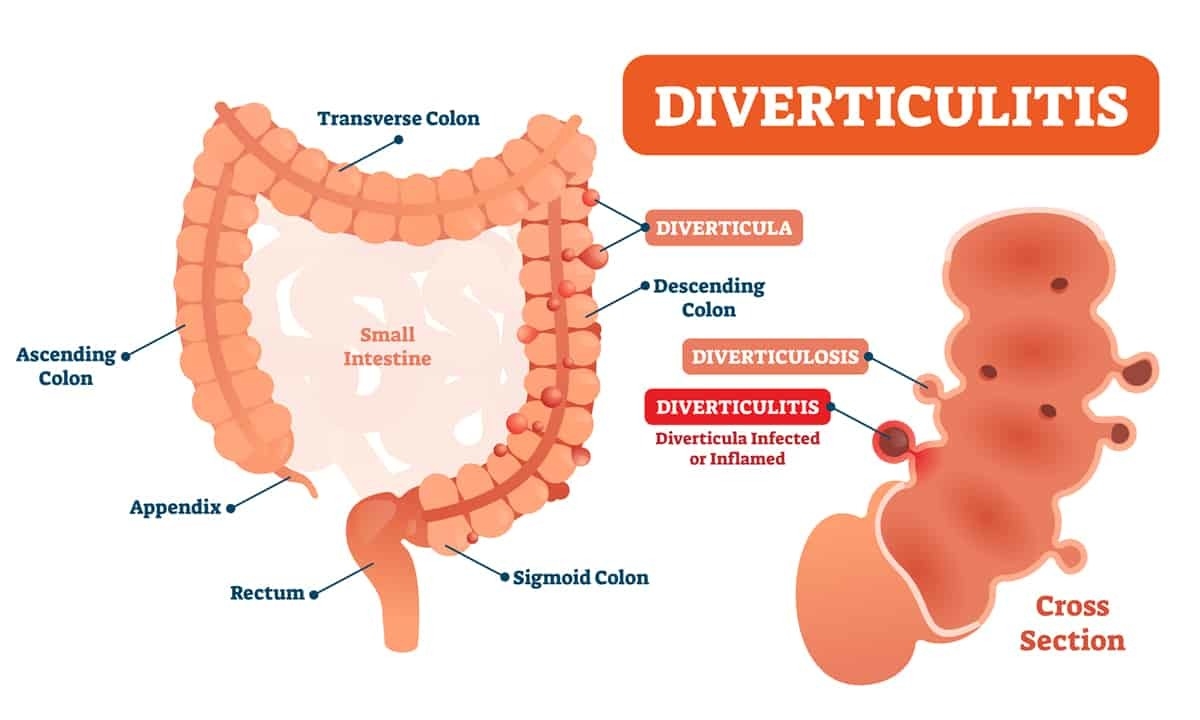
:max_bytes(150000):strip_icc()/zhansen-5202179_Final-c137eb0ec3c5474493c6c987faefc5f9.jpg)
The pain and tenderness is often in the left lower portion of the abdomen. There might be an increase in diarrhea, cramping, and bowel irritability, and symptoms can include intense pain, abdominal cramping, bleeding, bloating, and fever. Many symptoms are similar to those of irritable bowel syndrome (IBS) and often include changing bowel activities such as constipation, diarrhea, or alternating between the two extreme stool consistencies.ĭiverticulitis (flare-up) occurs when the diverticula become inflamed and/or infected. Please pay close attention to the use of the similar but distinctly different definitions: the condition of diverticular disease (diverticul osis) and inflammation of the diverticula (diverticul itis).ĭiverticulosis is often present without any symptoms. In about 10-25% of diverticular disease patients, the diverticula become inflamed (diverticulitis). In addition, the bowel tends to become irritable and spastic when there is inadequate bulk passing through and it must contract more intensely to pass contents along. These weak spots are the sites between the muscle bundles, which run both lengthwise and circularly throughout the colon. One theory is that diverticula occur when pressure, such as that caused by straining during constipation, builds up inside the colon and makes the intestinal wall balloon out in spots where the wall is weak. However, the exact cause of this disease remains unknown.

There is a wide geographic variability of diverticular disease and a striking correlation with an urban diet, which suggests a dietary factor as its root. Although rare, physicians have reported some extreme cases of large diverticula, spanning up to 25 cm (10″). They are characteristically 0.5-1 cm (0.2-0.4″) in diameter but can exceed 2 cm (0.8″). Generally, diverticula increase in number and in size over time. The number of diverticula in the gut can vary from a single occurrence (diverticulum) to hundreds. It’s a disease most prevalent in the elderly 65% of those who are older than eighty-five years of age have diverticulosis. Diverticula are small sac-like out-pouchings of the colon lining that balloon through the outer colon wall, occurring most frequently in the lower section of the colon (sigmoid), which is located on the left side of the pelvis.ĭiverticular disease occurs in about 5% of the Western adult population who are younger than forty years of age, but it rises sharply to occur in at least 50% of those who are older than sixty years of age. Diverticular Diseaseĭiverticular disease and diverticulosis are interchangeable terms meaning the presence of diverticula in the large intestine (colon).
DIVERTICULITIS FLARE UP PDF
This could include a routine screening to check for colorectal cancer or when tests are performed to diagnose other digestive problems.Click here to download a PDF of this information. Sometimes, diverticular disease is found when you are being tested for something else. A colonoscopy may be uncomfortable, but it’s usually not painful. Before the test, you are given medicine to make you relaxed and sleepy. This allows your doctor to see the inside of your entire large intestine.

He or she may ask about your bowel habits, diet, and any medicines you take. If you’re having symptoms, your doctor may check your abdomen for tenderness.


 0 kommentar(er)
0 kommentar(er)
